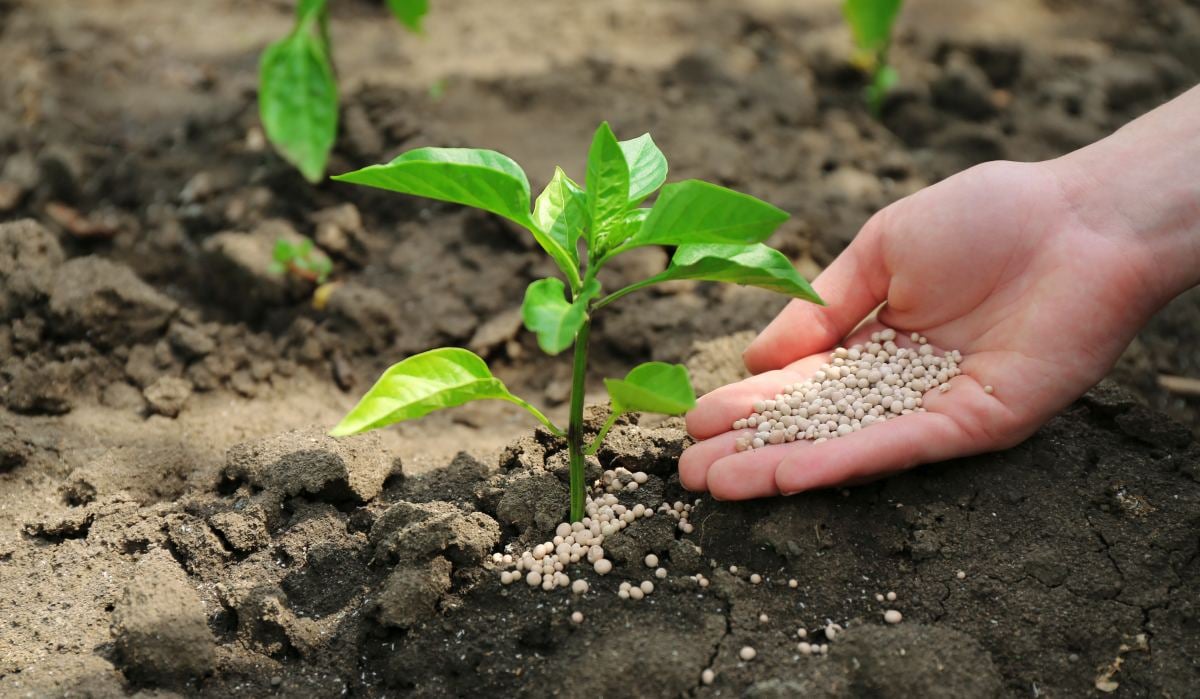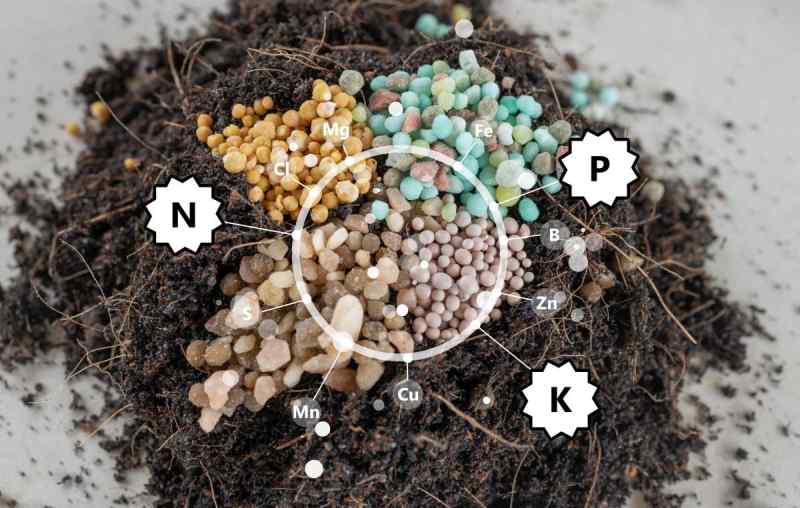
A slow-release fertilizer for the lawn is your grass’s steady, no-rush plan. It gradually releases essential nutrients into the soil over months, avoiding an overdose risk. The result? Green, well-nourished, and resilient grass growth.
From eco-friendly composted manure to precise synthetic choices, slow-release fertilizers come in many forms. They generally pack in key nutrients like nitrogen, potassium, and phosphorus, along with some minor elements essential for healthy turf growth.
Understanding Slow-Release Fertilizer

Slow-release fertilizers, be they organic or synthetic, are ideal for various types of green areas — from lawns and vegetable gardens to potted plants.
Rather than giving your grass a quick nutrient hit, they gently diffuse vital nutrients into the soil over an extended timeframe — anywhere from several weeks to several months, depending on the specific product.
They offer plants a stable supply of basic nutrients, including:
What’s even better? Some slow-release fertilizers for lawns offer extra nutrients such as calcium, magnesium, and sulfur. Not to mention essential micronutrients like iron, manganese, zinc, copper, and boron.
Unlike quick-release fertilizers that are instantly water-soluble powders or liquids, slow-release types are usually in granular or pellet form. This structure helps significantly lower the risk of “burning” or overfeeding your plants, as they absorb nutrients at a manageable pace. (Check our article titled What is Fertilizer Burn?)
*Note: Slow-release liquid fertilizers are also available. These typically come in a concentrated form that needs to be mixed with water before application. While they’re easier to apply and faster-acting than slow-release pellet fertilizer varieties, the main drawback is the higher cost, making them less cost-effective for lawn applications. (Here’s our guide on Liquid vs. Granular Fertilizer.)
Pro Tip: Instead of wading through the details yourself, hire a lawn treatment pro near you. They know how to apply the right fertilizer at the right time to help you grow a healthy lawn.
Types of Slow-Release Fertilizer
Slow-release fertilizer may broadly be divided into two categories, each with its own benefits:
Organic Slow-Release Fertilizers
These are natural fertilizers derived from plant, animal, or mineral sources. Their release of nutrients can be slightly unpredictable because this relies on soil microbes for breakdown. But they’re really good for your soil. They increase the organic content, which is great for retaining water and encouraging healthy root growth over time.
Some examples of slow-release organic fertilizers include:
- Composted animal manures
- Bone meal
- Cottonseed meal
- Feather meal
- Fish emulsion
Synthetic Slow-Release Fertilizers
Synthetic fertilizers, also known as inorganic fertilizers, undergo a complex manufacturing process to offer precise value: you know exactly what nutrients you’re pouring into your soil and how much. This predictability makes these fertilizers a favorite among lawn care specialists or landscapers who need guaranteed results.
How Do Slow-Release Fertilizers Work?
Most slow-release fertilizers are small granules or ‘prills.’ They’re covered with a semipermeable shell that regulates how and when the nutrients stored inside are released.
How does this shell know when it’s time to let nutrients out, you ask? It’s all down to factors such as:
- Soil Temperature: The warmer the soil, the faster nutrient release generally happens.
- Soil Moisture: Moisture aids decomposition and thus speeds up nutrient release.
- Soil Microbial Activity: Microorganisms help in the breakdown of organic components releasing nutrients.
- Soil pH Levels: Highly alkaline or acidic soils may alter the chemistry and slow down release rates.
As soon as these coated fertilizer granules come into contact with water in your garden, their nutrient-packed interiors start to break up gently. These nutrients then begin seeping through their protective layers into the surrounding soil.
How quickly this happens is determined by the thickness of their outer layer, what it’s made from, and the soil conditions mentioned above.
Benefits and Drawbacks of Slow-Release Fertilizer
Using slow-release fertilizers offers benefits that can transform your lawn care routine:
- Steady Nutrient Release: Slow-release fertilizers are great because they consistently feed your lawn over a long period, leading to even growth.
- Less Chance of Damage: There’s no need to worry about harming your grass. These fertilizers lower the chances of giving your lawn too much nitrogen at once which could kill it.
- Deeper Root Growth: As nutrients slowly release, roots can absorb them better, growing deeper into the soil. This means healthier and more resilient lawns.
- Environmentally Friendly: Unlike other types that often cause water pollution from runoff, these minimize excess nutrients in the environment — protecting the ecosystem.
- Fewer Applications Needed: The long-lasting effect of slow-release fertilizers means fewer applications are necessary. (For helpful tips on properly fertilizing your lawn, take a look at our guide: How to Fertilize Your Lawn.)
Using slow-release fertilizers also has a few drawbacks that could be important to consider:
- Higher Upfront Cost: Compared to quick-release fertilizers, slow-release varieties can be more expensive up-front. However, given the associated benefits and long-term effects, many still see it as a worthy investment.
- Slower Initial Results: If your plants or lawn are severely deficient in nutrients, slow-release fertilizers might not be the best choice. These fertilizers can take weeks to months to fully release their nutrients, which might not be ideal if quick results or recovery are needed.
- Requires Specific Soil Conditions: Nutrient release depends on soil warmth. In colder conditions, slow-release fertilizer breaks down slowly and delays results. Wait until the soil hits constantly around 55 degrees Fahrenheit for timely nutrient availability.
- Accurate Application: Using slow-release fertilizer requires correct application to ensure even growth across your lawn or garden. Uneven application can lead to inconsistent growth patterns, patchy areas, or over-concentration of nutrients in some spots.
When to Use Slow-Release Lawn Fertilizers
For the best results, use slow-release fertilizers during active grass growth so you don’t waste product or harm your lawn. Depending on your grass type and climate, consider these guidelines:
- Cool-Season Grasses: Apply when soil hits 55 and 65 degrees Fahrenheit in early spring or fall (6 to 8 weeks before the first frost.) This ensures the grass’s roots have enough nutrients as they come out of winter dormancy or prepare for it.
- Warm-Season Grasses: They do better in late spring to early summer, with soil temperatures between 65 and 75 degrees Fahrenheit.
*Note: Skip applications if daytime highs exceed 85 degrees Fahrenheit because intense heat releases nutrients too fast and may burn your lawn. For more details on optimal fertilizing time, check our complete guide on When to Fertilize Your Lawn.
FAQ About Slow-Release Fertilizer
How Long Does Slow-Release Fertilizer Last?
Slow-release granular fertilizer can last 6 to 8 weeks or longer, providing nutrients to your lawn over an extended period. You may only need to apply them once or twice during the growing season, depending on the specific product and your lawn’s needs
Always follow the package instructions for proper usage and application rates.
How Long Does it Take to See Results From Slow-Release Lawn Fertilizer?
It varies based on the type of fertilizer and the conditions in which it’s used. Normally, noticeable changes can start appearing anywhere from 1 to 4 weeks after application. However, slow-release fertilizers are designed for long-term nourishment, and results become more visible over several months.
How Do I Choose Slow-Release Fertilizer?
Choosing a slow-release fertilizer requires careful consideration. First, conduct a soil test to determine what nutrients your grass actually needs. Then, based on your preferences and budget, decide on either synthetic or organic fertilizer.
Finally, check the label for the fertilizer numbers or N-P-K ratio (Nitrogen-Phosphorus-Potassium) to ensure it suits your yard’s requirements. (Here’s our complete guide on How to Choose the Right Lawn Fertilizer.)
Find a Lawn Care Pro Near You
From nitrogen to potassium, slow-release fertilizers sure play a key role in keeping your lawn lush and healthy. But don’t underestimate the power of a good mow. Strategic trimming not only makes your lawn look neat but also helps it absorb those vital nutrients better.
Combine proper mowing with the right fertilizer use, and you’ve got yourself an unbeatable duo for top-notch lawn care. Feeling overwhelmed? Call in a local lawn care pro who can perform the mowing, fertilizing, and weed control for your gorgeous green patch.
Main Photo Credit: Africa Studio / Adobe Stock Free / License